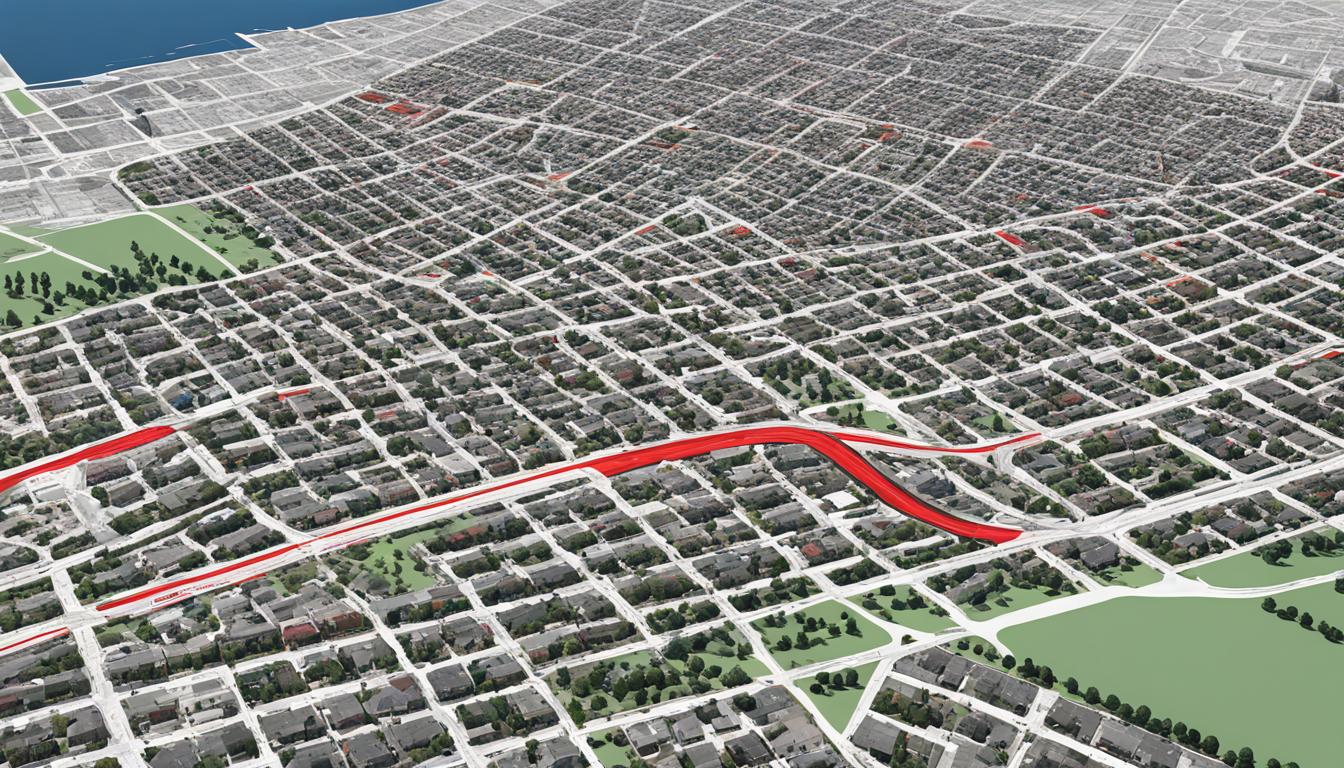Echoes of the Past: Touring Nebraska’s Rich Historical Sites
Nebraska is more than just open land and peaceful scenes. It holds a wealth of historical treasures. These include sites, landmarks, and museums. They show us the area’s rich history, from Lewis and Clark’s journeys to the building of the Lincoln Highway.
Can you picture following in Lewis and Clark’s footsteps? Imagine the place where they met with Native Americans for the first time. Or think about visiting the spot of Nebraska’s second capitol building. These sites let us travel back in time and learn about the past in a new way.
Key Takeaways:
- Nebraska is home to numerous historical sites, landmarks, and museums.
- These sites offer a glimpse into Nebraska’s vibrant heritage.
- Exploring these historical sites challenges our understanding of the past.
- From Lewis and Clark to the development of the Lincoln Highway, Nebraska’s history is rich and diverse.
- By visiting these sites, we can connect with the echoes of the past and gain a deeper appreciation for Nebraska’s history.
Understanding the Legacy of Redlining: Historical Roots and Present-day Implications
In the 1930s, federal programs shaped the future of many neighborhoods. They drew maps that labeled areas as good or bad for investing based on race. Sadly, this led to huge gaps in wealth, education, and health between different communities.
At the Omaha Film Festival, the documentary “Divisible” will be shown. It looks at how redlining started and its effects, giving us important insights. Also, the Duke University exhibit “Undesign the Redline” at UNO helps us understand redlining’s impact on U.S. housing.
The Omaha Housing Affordability Action Plan is fighting the housing crisis worsened by redlining. This plan wants to make housing easier to find and to promote fair development in Omaha. It’s meant to help all its people.
The Greenlining Fund invests in areas affected by redlining. It aims to help build up these places with care and to keep living there affordable. This work fights falling home values and prevents people from being pushed out.
Further Resources
- Mapping Inequality: An online resource by the University of Richmond that provides access to redlining maps from the 1930s
- The Color of Law by Richard Rothstein: A book exploring the government’s role in housing segregation and the legal framework that perpetuated it
Understanding and dealing with redlining’s past and present helps us build a fairer society. It opens doors for everyone and fights the issues of housing inequality and gentrification.
A Journey through Nebraska’s Historical Milestones

Nebraska’s history is full of important events that made it what it is today. There’s a lot to learn from these significant milestones. Let’s take a look at them:
- Lewis and Clark’s Expedition and First Council: In 1804, Lewis and Clark began their legendary journey. They met Oto and Missouria Indians at “Council Bluff” for the first time. This marked the start of Nebraska’s story with explorers and Native Americans.
- Establishment and Relocation of the Territorial Capitol: From 1857 to 1868, the second territorial capitol was on Capitol Hill. The capitol then moved to Lincoln. This move made Lincoln the permanent capital city of Nebraska.
- Founding of Omaha High School: In 1859, Omaha High School started. Today, it’s known as Central High School. It’s a place with a great history of education.
- Construction of Joslyn Castle: In Omaha, George and Sarah Joslyn built the amazing Joslyn Castle. It was designed by John McDonald, a famous architect. The castle shows the Joslyns’ importance and wealth.
- Development of the Lincoln Highway: Nebraska was part of the Lincoln Highway, linking the East and West. This road helped business and travel grow across the nation.
- Role of the Platte River: The Platte River was a key path to the West. It was used by fur traders, travelers, and settlers. The river played a big part in Nebraska’s early days.
- Founding of Fremont: Fremont was named after John C. Fremont, who was big in the 1856 election. It became a central spot by the Platte and Loup Rivers.
- The Villasur Expedition: In 1720, a Spanish expedition checked on the French’s movements around the Missouri River. They provided new understanding of the area at that time.
- Contributions of Andrew Jackson Higgins: Andrew Jackson Higgins from Nebraska made the famous “Higgins boats.” These boats were crucial in World War II, aiding in beach landings.
- History of Duncan: Duncan, Nebraska, had a key role in trade and transport in the past. It was a vital link in the area’s development and settling of the West.
- The Lincoln Memorial Highway: Nebraska is part of the Lincoln Memorial Highway. This stretch of the Lincoln Highway is special. It stands for the adventure and curiosity of the American people.
Studying these milestones dives us into Nebraska’s exciting past. We get to see how these events helped form the state’s character and story.
Conclusion
Nebraska has many historical spots that show its interesting past. People from here and visitors find these places very important. They tell stories like when Lewis and Clark met the Native Americans at the Lewis and Clark Camp Site.
Places like Capitol Hill show milestones in Nebraska’s history. We must keep these places for the future. They help us know where we come from and make us proud to be Nebraskans. These spots teach us about the hard times, victories, and diversity of our state over the years.
Redlining is an important part of Nebraska’s past too. This unfair policy has caused differences in wealth and opportunities. Understanding Nebraska’s past means we should also work to make these wrongs right. We must keep helping the areas affected by redlining.
It’s key to keep learning about and caring for Nebraska’s history spots. This way, their importance lives on for future generations. They show us the past and remind us why knowing and respecting our common history is key.







